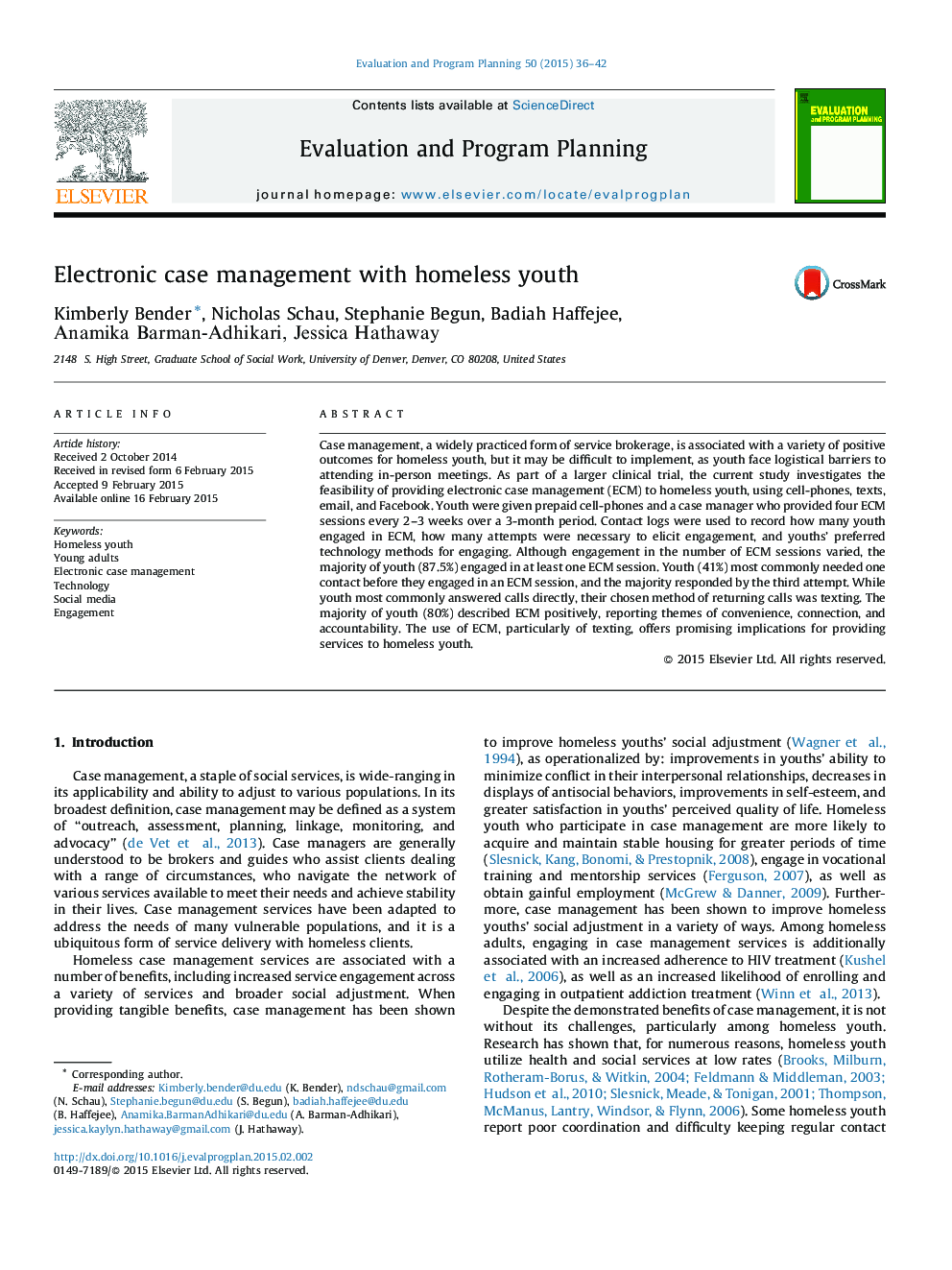| Article ID | Journal | Published Year | Pages | File Type |
|---|---|---|---|---|
| 319406 | Evaluation and Program Planning | 2015 | 7 Pages |
•Engagement with electronic case management was high and consistent across time.•Youth report favorable experiences of ECM, including convenience and accessibility.•Relatively few attempts at contact were necessary before youth engaged.•Youth typically answered calls directly or returned contact using texts.
Case management, a widely practiced form of service brokerage, is associated with a variety of positive outcomes for homeless youth, but it may be difficult to implement, as youth face logistical barriers to attending in-person meetings. As part of a larger clinical trial, the current study investigates the feasibility of providing electronic case management (ECM) to homeless youth, using cell-phones, texts, email, and Facebook. Youth were given prepaid cell-phones and a case manager who provided four ECM sessions every 2–3 weeks over a 3-month period. Contact logs were used to record how many youth engaged in ECM, how many attempts were necessary to elicit engagement, and youths’ preferred technology methods for engaging. Although engagement in the number of ECM sessions varied, the majority of youth (87.5%) engaged in at least one ECM session. Youth (41%) most commonly needed one contact before they engaged in an ECM session, and the majority responded by the third attempt. While youth most commonly answered calls directly, their chosen method of returning calls was texting. The majority of youth (80%) described ECM positively, reporting themes of convenience, connection, and accountability. The use of ECM, particularly of texting, offers promising implications for providing services to homeless youth.
